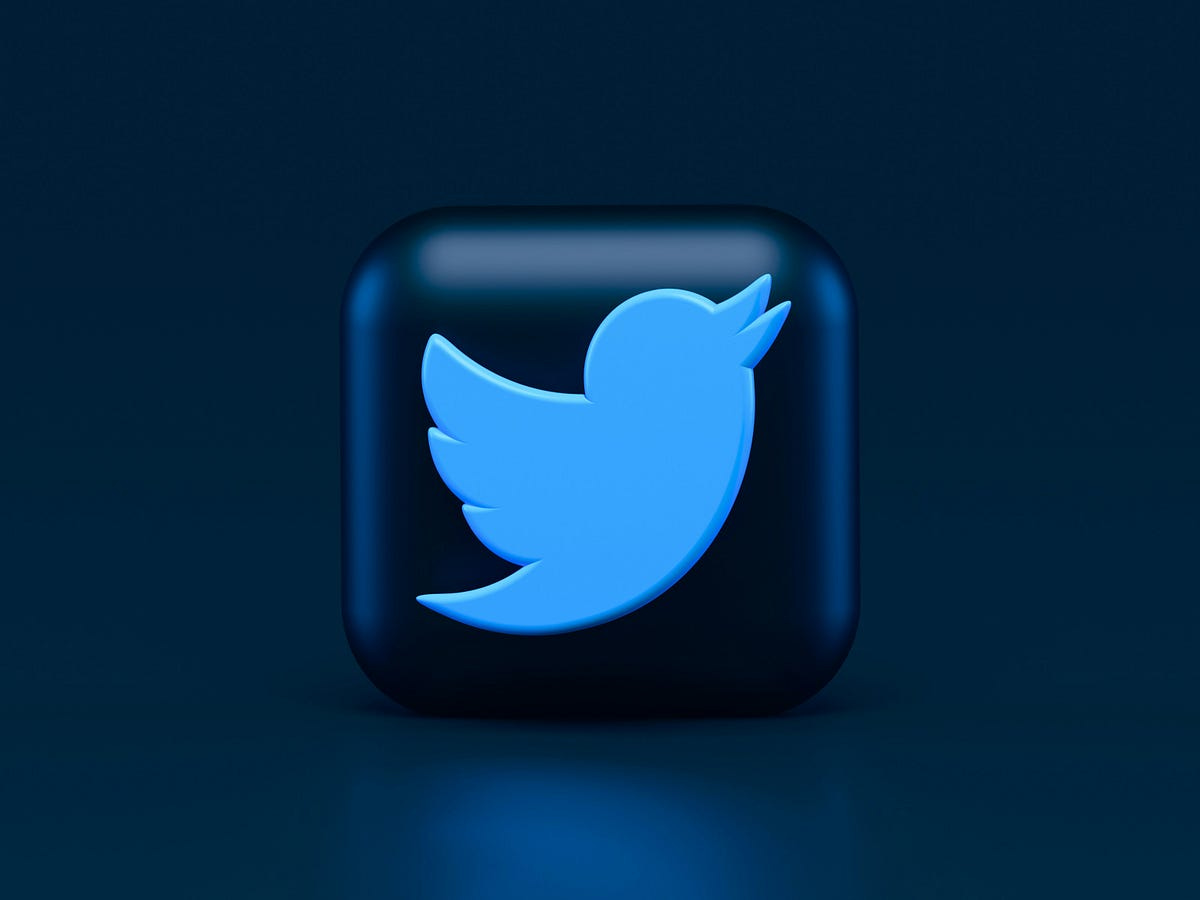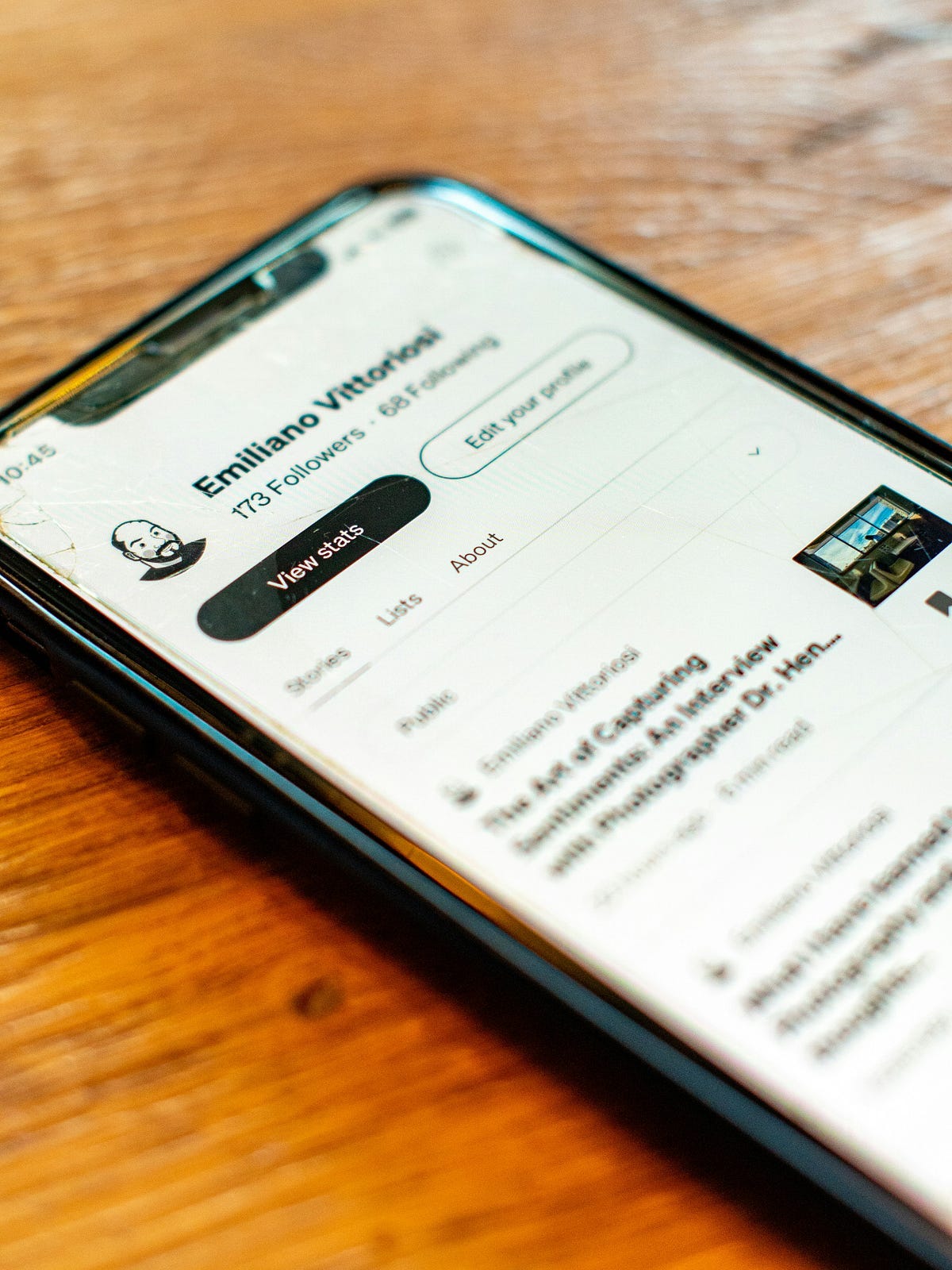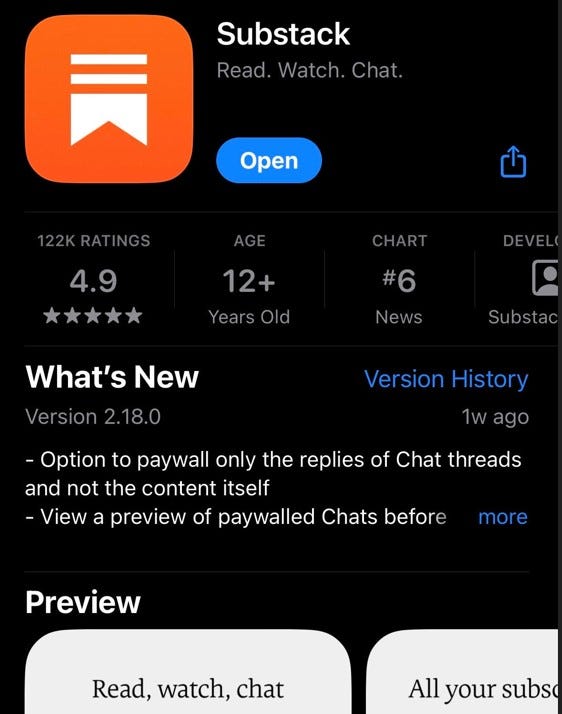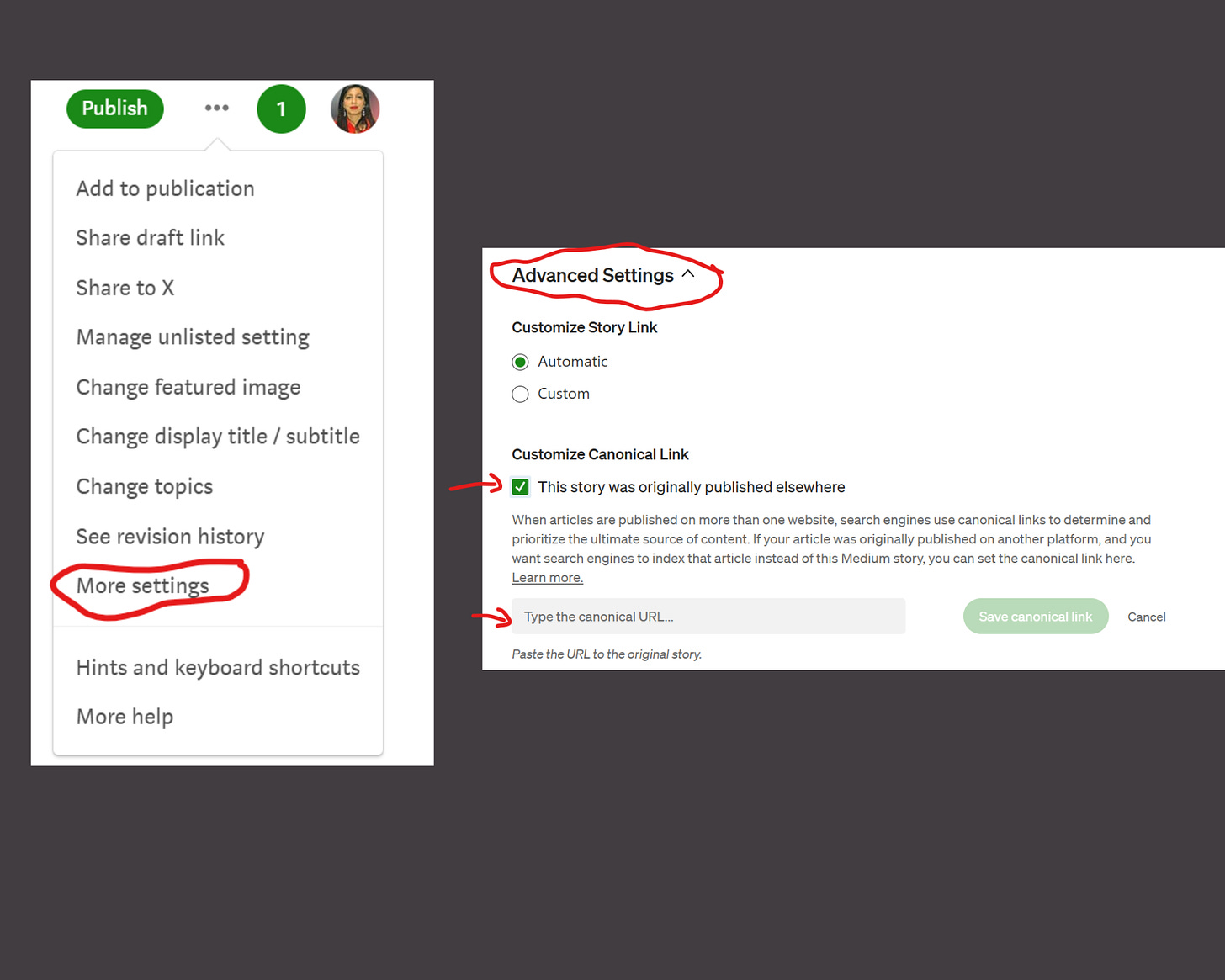Why I Started Writing Online This Year
And How It's Going (Twitter(X) vs. Medium vs. Substack)

What do you want to be when you grow up Sirah?
An astronaut →detective →inventor →first girl in the NBA →teacher →dentist →nurse
Like most kids, my answer to that age-old question changed as frequently as the weather, influenced by my growing years and evolving interests.
Reflecting on that list, I notice a moment where my boundless childhood dreams got shoved into the practical, adult-sized box society likes to hand us. But let’s unpack that another time.
Adam Grant in his book Think Again advocates for asking kids what they want to do when they grow up, instead of what they want to be.
This slight tweak in wording can help uncouple personal identity from profession, thereby easing the pressure that often ties self-worth to job titles.
It’s a bit like enjoying both hiking and playing the piano without having to commit to being a professional mountaineer or concert pianist.
Things move fast and new careers are being created all the time.
There was no such things as a mobile app developer when I was growing up so I could not have ever imagined to be one. To be clear — I am still not one, but just sayin’.
In reality, I kicked off my career as an x-ray technologist, later transitioning into magnetic resonance imaging and then healthcare administration. Not once did my childhood (or adult) career aspirations mention writing.
So why have I started writing?
When the student is ready the teacher will come
It all started with a routine walk in trails near my house March this year when a video by a certain Dan Koe popped up on my YouTube feed — I had no clue who he was at the time.
The video showed a web designer turned writing entrepreneur, making a compelling case for carving out your niche through online writing.
Suddenly, I found myself seriously considering this.
Before I know it, I am enrolled in his two-hour writing course, messing around with some ideas in a Notion template, and gearing up to dive into the world of online writing. (Turns out, Dan isn’t just a good writer; he’s a marketing wizard.)
Now, I am someone who has deliberately chosen to stay off the social media type internet for the past decade.
Hence why I don’t know many current day famous people out there.
I sprinkle posts on my Facebook here and there but I have been very selective about who I add as a ‘friend’. I choose to add people I have met more than once and preferably people I feel I actually know — I mean I am giving them inner access to my life.
Fast forward to today — here I am , writing tweets, threads, articles and actually hitting post — which is crazy cause not only does writing give people access to your life but it gives them access to your mind — this is as intimate as it gets folks!
I still vividly remember my first article on Medium this April. I agonized over every word and dreaded the moment of hitting publish.
It was all a mental block. I hadn’t put myself out on the internet like this and the thought of doing so was pretty scary.
Somehow I managed to hit publish after dragging my heals for awhile and lo and behold I survived.
Instantly I realized I was victim to the spotlight effect — people don’t really care as much about what we are doing as we think. They are more consumed with their own stuff.
My article was not being scrutinized by the world. In fact, I am pretty sure my sister in law was the only one to read it. Huge shout out to my number one fan — she’s the best!
I proved to myself, yet again, the only way to get past fears is to actually do the thing you fear — once you do it and survive you teach your mind it is okay.
Repeat the action a few times and your fear is a thing of the past.
Having published over 25 articles now — I don’t have the same dread or fear associated with hitting publish. I find that I am not overthinking as much and just going for it.
To get good at anything you have to put in the reps. There is mutual gain here—I am able to put my thoughts out there and if even one person is gaining from it (winking at my sister in law) — this is a win!
If you have the desire to write online and have not started or had the courage to hit ‘publish’ — I was there not so long ago. I am here to tell you that you will survive and it won’t be as big of deal as you think right now.
You will feel much better and be proud of yourself for doing it.
I love Shia LeBeouf’s viral video of yelling into the camera telling you to ‘just do it!’. If you respond well to intense encouragement, you should watch his video:
Platform Insights: Navigating Medium, Substack, and X (Twitter)
I have been writing on three platforms: X (Twitter), Medium, & Substack.
Here are my takeaways:
X (Twitter)

I started using X in March, posting tweets and threads which helped me improve my conciseness thanks to tools like TweetHunter and the 280 character limit.
The best way to grow without burnout on X is through dedicated time slots of commenting on others posts in a meaningful way.
Here’s a tip:
Login and comment on peoples tweets for 15–20 mins
Post your own tweet
Continue commenting on posts for 15 -20 mins
This process will get you in front of the person you are posting on and those reading their post.
If your comment is more than just “good one!” or “agreed” and adds to the conversation, this will open a curiosity loop enticing those reading to click on your profile.
Once they click they will see your post and hopefully engage with it.
I racked up a few hundred followers doing this.
Direct messaging people you feel you will connect with is also a great way to boost relationships and start to form a community on there.
I took a hiatus due to picking up a busy job in spring and noticed a need to re-engage actively to boost visibility in September (as I resumed posting).
Pros:
Real-Time Engagement: Twitter excels at instant interaction, allowing for immediate feedback and discussions with readers.
Ideal for Short Content: Perfect for those who excel at expressing ideas concisely, fitting well within the 280-character limit.
Networking Opportunities: Twitter’s dynamic nature makes it excellent for networking and connecting with other writers, influencers, and potential collaborators.
Cons:
Short Attention Spans: The fast-paced environment makes it difficult for long-form content to gain traction.
Time-Consuming Engagement: Maintaining visibility and engagement requires frequent interaction, which can be time-consuming.
Algorithm Dependence: Similar to Medium, your content’s reach can be significantly impacted by Twitter’s algorithms.
Medium

Medium was where I posted my first long-form article in April.
The platform’s user-friendly nature and community feel have made it my preferred choice for publishing, encouraging a more relaxed and engaging writing experience.
I have gained organic followers on Medium which hasn’t been the case in Substack — however, to be fair— I have been on Medium longer.
Pros:
User-Friendly Interface: Medium is straightforward to use, making it easy for beginners to start writing and publishing without a steep learning curve.
Organic Reach: The platform has built-in algorithms that promote your content to readers interested in similar topics, increasing your visibility.
Community Feel: Medium fosters a community atmosphere where writers feel supported and encouraged—not a competitive environment.
Cons:
Limited Monetization Options: Earning significant money directly from Medium can be challenging unless you consistently generate high engagement.
Heavy Reliance on Platform Algorithms: Your visibility can be heavily dependent on Medium’s algorithms, which can change and affect your reach.
Substack
Substack is my latest venture—couple months in—with the purpose starting a personal newsletter.
Growth has been slow, with initial traction mainly from a dedicated Substack Reddit community I engaged in from the get-go.
One big difference in the style on Substack is it doesn’t push hustle culture in their “Notes” section as much as I have seen on X’s feed — I resonate with this because I don’t believe you need to sacrifice every ounce of your energy and time to get ahead in life.
There is a balance that needs to be kept for mental health and relationships.
There is also less braggadocios metric posts than what you see on X.
Some, but less.
Substack feels more authentic (when compared to X) and people share much more deeply in their writing.
I have not hit Substack Notes as much as I would have liked to and plan on getting more active on that in the upcoming weeks.
Hoping this will create some more visibility for me.
Pros:
Newsletter Integration: Ideal for writers looking to build and manage a mailing list, integrating article publication with email newsletters seamlessly.
Direct Reader Relationship: Substack allows you to cultivate a direct relationship with your readers without the interference of ads or algorithms.
Cons:
Slow Start for Audience Building: It can be challenging to build an audience from scratch if you don’t already have a follower base from other platforms.
Limited Discovery Features: Unlike Medium, Substack does not push your content to users who aren’t subscribed, which can limit your growth potential.
Final Thoughts
Eight months ago, publishing anything online seemed like a distant reality.
Now, armed with experiences from platforms like X, Medium, and Substack, writing is feeling natural and I am excited to continue to develop my skills and share what I am learning.
If you’re contemplating online writing, I encourage you to dive into any platform that feels right to you.
If you want to start with short content—start with X.
For longer form Medium and Substack can be equal choices OR you could cross post to both.
You would have to post on Substack first and then add that link into your Medium article as a canonical URL (more settings—> so that the SEO engines can designate an origination spot for your piece.
The best time to act on your desires was yesterday—the second best time is today.
Remember—you don’t have to be an astronaut or NBA star to shoot for the stars in the writing world — just hit ‘publish.’





